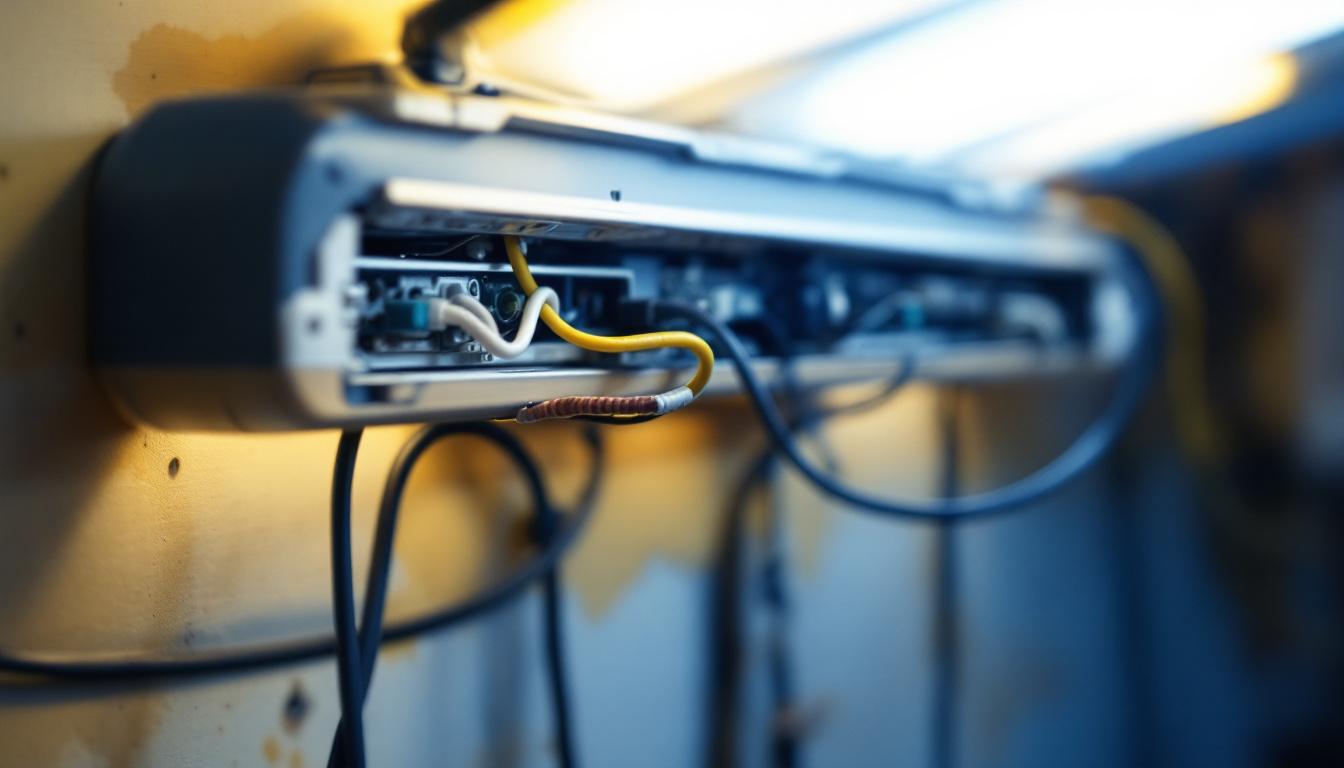
For lighting contractors, mastering solar lights clearance is not just a matter of compliance—it’s a critical factor in ensuring optimal performance, safety, and customer satisfaction. Clearance refers to the minimum distance required between solar lighting fixtures and surrounding objects such as buildings, vegetation, or other electrical installations. This spacing affects everything from light distribution to maintenance accessibility and system longevity.
Solar lighting systems harness energy from the sun, converting it into electrical power stored in batteries to illuminate spaces after dark. Unlike traditional wired lighting, solar lights rely heavily on unobstructed exposure to sunlight, making clearance considerations even more vital. Proper clearance ensures panels receive maximum sunlight, batteries charge efficiently, and the fixtures operate without interference or hazards.
Lighting contractors who understand the nuances of solar lights clearance can avoid common pitfalls such as reduced illumination, premature equipment failure, and regulatory violations. This knowledge also empowers contractors to design layouts that maximize energy efficiency and aesthetic appeal, ultimately delivering better value to clients.
Unlike conventional lighting, solar lights are self-contained units with photovoltaic panels that require direct sunlight to function effectively. Any obstruction—be it a tree branch, wall, or even neighboring fixtures—can significantly diminish the panel’s ability to capture solar energy. This results in dimmer lighting, shorter operating hours, and increased maintenance demands.
Moreover, clearance impacts safety. Insufficient spacing can lead to overheating, electrical shorts, or damage from environmental factors. For example, panels placed too close to combustible materials may pose fire risks, while inadequate spacing around batteries can hinder ventilation, reducing battery life and performance.
Additionally, understanding the local climate and seasonal changes is crucial when planning solar light installations. In regions with heavy snowfall or frequent storms, contractors must consider how these elements could obstruct solar panels or damage fixtures. For instance, snow accumulation on panels can block sunlight, effectively rendering the system useless until cleared. Therefore, planning for seasonal variations and ensuring adequate clearance can significantly enhance the resilience and reliability of solar lighting systems.
Furthermore, the aesthetic integration of solar lights into the landscape is another aspect that benefits from thoughtful clearance planning. By ensuring appropriate distances from trees and shrubs, contractors can create visually appealing installations that harmonize with the natural surroundings. This not only enhances the overall ambiance of the area but also minimizes the need for ongoing maintenance, as plants grow and shift over time. A well-planned layout can lead to a more sustainable installation, reducing the frequency of adjustments and replacements while maintaining the beauty and functionality of the outdoor space.
Lighting contractors must adhere to a combination of manufacturer recommendations, local codes, and industry best practices when determining clearance distances. While specific requirements vary depending on the type of solar light and installation environment, several universal principles apply:
Panels should be positioned to avoid shading throughout the day. A general rule is to maintain a minimum clearance of several feet from any obstruction that could cast shadows during peak sunlight hours. This often means placing panels on rooftops, poles, or open ground with clear southern exposure (in the northern hemisphere) or northern exposure (in the southern hemisphere).
Additionally, panels require sufficient airflow to prevent overheating. Contractors should ensure at least 4 to 6 inches of space between the panel’s rear surface and any mounting structure to facilitate ventilation. This airflow is crucial not only for maintaining optimal performance but also for prolonging the lifespan of the panels, as excessive heat can lead to reduced efficiency and potential damage over time. Regular inspections and maintenance can help ensure that the panels remain free of debris and obstructions that could impede airflow.
Solar light fixtures, including integrated battery units, need clearance for heat dissipation and maintenance access. Batteries, in particular, must be housed in well-ventilated enclosures spaced away from combustible materials. A typical clearance recommendation is at least 12 inches around battery compartments to allow for cooling and servicing. This is especially important in areas with high ambient temperatures, where battery performance can be significantly affected by heat buildup.
Fixtures mounted near walkways or driveways should also maintain a safe height and lateral distance to prevent accidental damage or injury. For example, pathway solar lights are commonly installed with a minimum of 18 to 24 inches clearance from edges to avoid being struck by foot traffic or vehicles. Furthermore, the height of the fixtures should be considered to ensure they are visible at night while minimizing the risk of being knocked over or damaged. Proper placement not only enhances safety but also improves the overall aesthetic appeal of the landscape.
Even though solar lights are often low voltage, contractors must ensure compliance with electrical codes that govern clearances from power lines, junction boxes, and other electrical equipment. National and local codes may specify minimum distances to reduce electrical interference and ensure safe installation practices.
For instance, solar lighting systems connected to the grid or integrated with other electrical components may require clearance of several feet from high-voltage lines or equipment. Contractors should consult the National Electrical Code (NEC) and local regulations to confirm precise requirements. Additionally, it is important to consider the potential for future landscaping changes that could affect clearances. Trees and shrubs may grow over time, leading to unintentional shading or interference with the solar lighting system. Therefore, planning for future growth and adjusting the installation accordingly can help maintain optimal performance and compliance with safety standards.
Beyond theoretical clearance guidelines, experienced lighting contractors employ practical strategies to optimize solar light installations. These techniques help overcome site-specific challenges and enhance system performance.
A thorough site assessment is the first step in determining appropriate clearance. Contractors should evaluate the solar exposure throughout the day and across seasons, identifying potential shading sources such as trees, buildings, and utility poles. Using tools like solar pathfinders or smartphone apps can assist in visualizing sun angles and shadow patterns.
Planning the layout with clearance in mind also involves considering future growth of vegetation and potential changes in the environment. For example, planting fast-growing trees near solar panels can cause shading problems within a few years, so contractors should recommend suitable planting distances or alternative locations.
Utilizing adjustable mounts and modular components allows contractors to fine-tune panel angles and heights, optimizing clearance and solar exposure. Tilt-adjustable brackets enable panels to track seasonal sun variations, while pole mounts can elevate fixtures above potential obstructions.
These flexible mounting options also facilitate easier maintenance and replacement, as components can be repositioned without extensive disassembly.
Clearance is not a one-time consideration. Over time, environmental changes such as tree growth, debris accumulation, or structural modifications can reduce clearance and impair system performance. Lighting contractors should recommend and perform regular inspections to verify that clearance remains adequate and that panels and fixtures are clean and unobstructed.
Maintenance visits are also opportunities to check battery health, wiring integrity, and fixture stability, ensuring the solar lighting system continues to operate safely and efficiently.
Real-world examples illustrate how proper clearance management can make or break a solar lighting installation.
A lighting contractor was tasked with installing solar pathway lights in a densely wooded urban park. Initial placement of panels on low poles resulted in significant shading from mature trees, causing dim lighting and frequent battery depletion. By reassessing clearance and relocating panels to higher poles with adjustable mounts, the contractor improved sunlight exposure and extended battery life.
Additionally, increasing lateral clearance from tree branches and ensuring at least 24 inches of space from pedestrian paths reduced damage risk and enhanced safety.
In a commercial parking lot project, solar lights were installed close to building walls to reduce wiring complexity. However, the proximity led to shadows on panels during morning and evening hours, limiting charging efficiency. The contractor resolved this by repositioning panels onto freestanding poles with adequate clearance from walls and nearby structures, optimizing solar access.
Moreover, ensuring battery enclosures had at least 12 inches of clearance from combustible materials improved ventilation and compliance with safety codes.
Advancements in solar lighting technology and installation methods continue to influence clearance considerations.
New photovoltaic panels with higher efficiency and lower profile designs reduce the need for large clearance areas, enabling more compact installations. Integrated solar light units that combine panels, batteries, and LEDs into a single enclosure simplify mounting and clearance requirements.
However, these integrated systems still require thoughtful spacing to avoid overheating and shading, especially in high-density applications.
Smart solar lighting systems equipped with sensors and remote monitoring capabilities allow contractors to track performance metrics such as battery charge, light output, and shading impact in real time. This data helps identify clearance-related issues early and optimize maintenance schedules.
By leveraging smart technology, contractors can proactively manage clearance challenges and enhance system reliability.
For lighting contractors, mastering the secrets of solar lights clearance is essential to delivering safe, efficient, and durable solar lighting installations. Understanding the unique requirements of photovoltaic panels, fixtures, and batteries, combined with adherence to codes and practical site strategies, ensures optimal system performance and client satisfaction.
By investing time in thorough site assessments, employing flexible mounting solutions, and embracing emerging technologies, contractors can overcome clearance challenges and position themselves as experts in the growing solar lighting market.
Ultimately, the key to success lies in recognizing that clearance is not merely a technical specification but a foundational element that influences every aspect of solar lighting—from energy capture to safety and longevity.
Ready to elevate your solar lighting installations with the best products on the market? Look no further than LumenWholesale, where we provide lighting contractors with superior, spec-grade lighting solutions at unbeatable wholesale prices. Our commitment to quality and affordability ensures that you can deliver safe, efficient, and durable lighting without the burden of inflated costs. Plus, with free shipping on bulk orders, you can stock up on all the essentials without any hidden fees. Don’t compromise on quality or value—choose LumenWholesale for your next project and experience the perfect blend of performance and convenience. Visit us now at Wholesale Lighting at the Best Value and make the smart choice for your lighting needs.

Discover how solar up lighting is revolutionizing the lighting industry, offering sustainable solutions that enhance efficiency and creativity for contractors.
Discover how lighting contractors can revolutionize educational environments by mastering hallway lighting in schools.

Discover the crucial role of ballast in fluorescent light fixtures and why it’s often the overlooked component in lighting projects.

Discover the essentials of LED retrofit light fixtures and compliance standards in this comprehensive guide for lighting contractors.